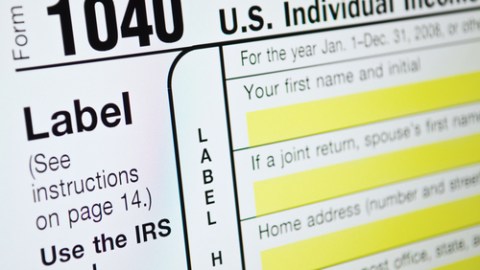Taxation in Theory and Reality

The debate over the fiscal cliff has spawned a multitude of suggestions for reforming the tax system, including my own. One possible reason for the wide range of proposals, even from mainstream economists, is that the recommendations of standard economic theory may be very different from what the American economy actually needs today. Here are two views of taxation, from the theoretical and realistic standpoints – can you find a happy medium between them?
THE THEORY: People save, firms spend
There are only two ways to raise wages in the standard macroeconomic model. One is to put more capital in the hands of labor. The other is to find better ways to combine capital and labor, for example with technology. Individuals supply money to firms by saving (via stock, bonds, and bank deposits), and firms use the money to buy capital. As a result, a tax system should try not to hinder saving by individuals or spending by firms.
This simple insight has broad implications for taxation. Individuals should not face any taxes on their savings; there is no place for taxes on dividends, interest, or capital gains. Firms should not face obstacles to spending, so all purchases of capital should come from pre-tax dollars.
Money not spent by firms should return to individuals as dividends, since extra cash on hand suggests that firms have run out of productive uses for new capital. Here there is a role for a tax on corporate profits; money not spent or returned to shareholders is taken away. The tax should not be 100 percent, however, because firms may need some latitude to retain earnings and smooth out fluctuations in cash flow.
Of course, individuals can also invest in human capital (education and training) and the capital of their own households (houses, cars, and other durable goods). These purchases should also be free of tax to maximize the productivity of labor.
A tax system created on this basis would tax individuals only on purchases of non-durable goods and luxury or non-essential durables. The only tax on firms would be a tax on corporate profits. Rates would be set to meet the revenue needs of government.
THE REALITY: It’s complicated
The structure of the tax system at any one moment in time is not the only thing that affects economic growth and living standards. Also important are access to opportunity and the bargaining that occurs between owners of capital (shareholders) and owners of labor (workers).
Economies realize their full potential when they allocate opportunities efficiently, that is, when a given opportunity goes to the person or firm that is most able to exploit it to the benefit of society. The tax system has little direct say in the allocation of opportunities, but it can affect allocation over time. For example, if the tax system breeds inequality – as the one described above might well do – then it becomes increasingly likely that access to opportunity will depend more on wealth and connections than on talent and hard work.
Bargaining is also a pivotal determinant of living standards. Even if the productivity of workers rises, they may not receive higher wages if they cannot bargain successfully with the owners of capital, who are typically their bosses. The size of the overall pie might grow, but workers’ portions may not change at all.
In the United States, inequality in wealth has reached extreme proportions, and the share of labor in national income has fallen steeply for half a century. As a result, implementing the tax system described above may end up hurting the economy more than helping. We should certainly consider other paths to improving access to opportunity and the bargaining power of labor besides implementing a second-best tax system. But these paths may be long indeed, requiring a generation or longer to make a noticeable change. In the meantime, a more progressive – if less efficient – tax system may serve the economy’s interests better.





